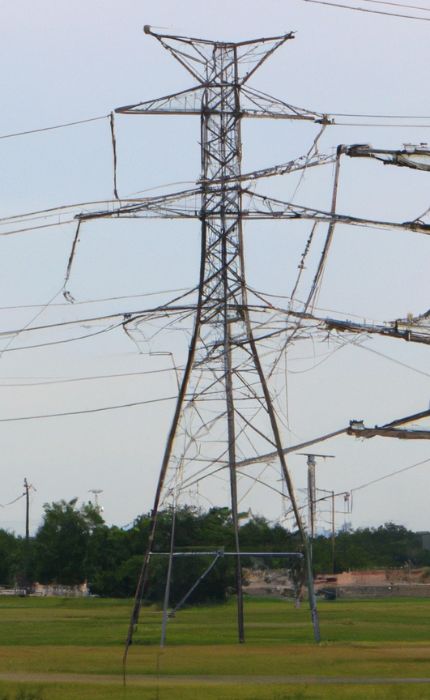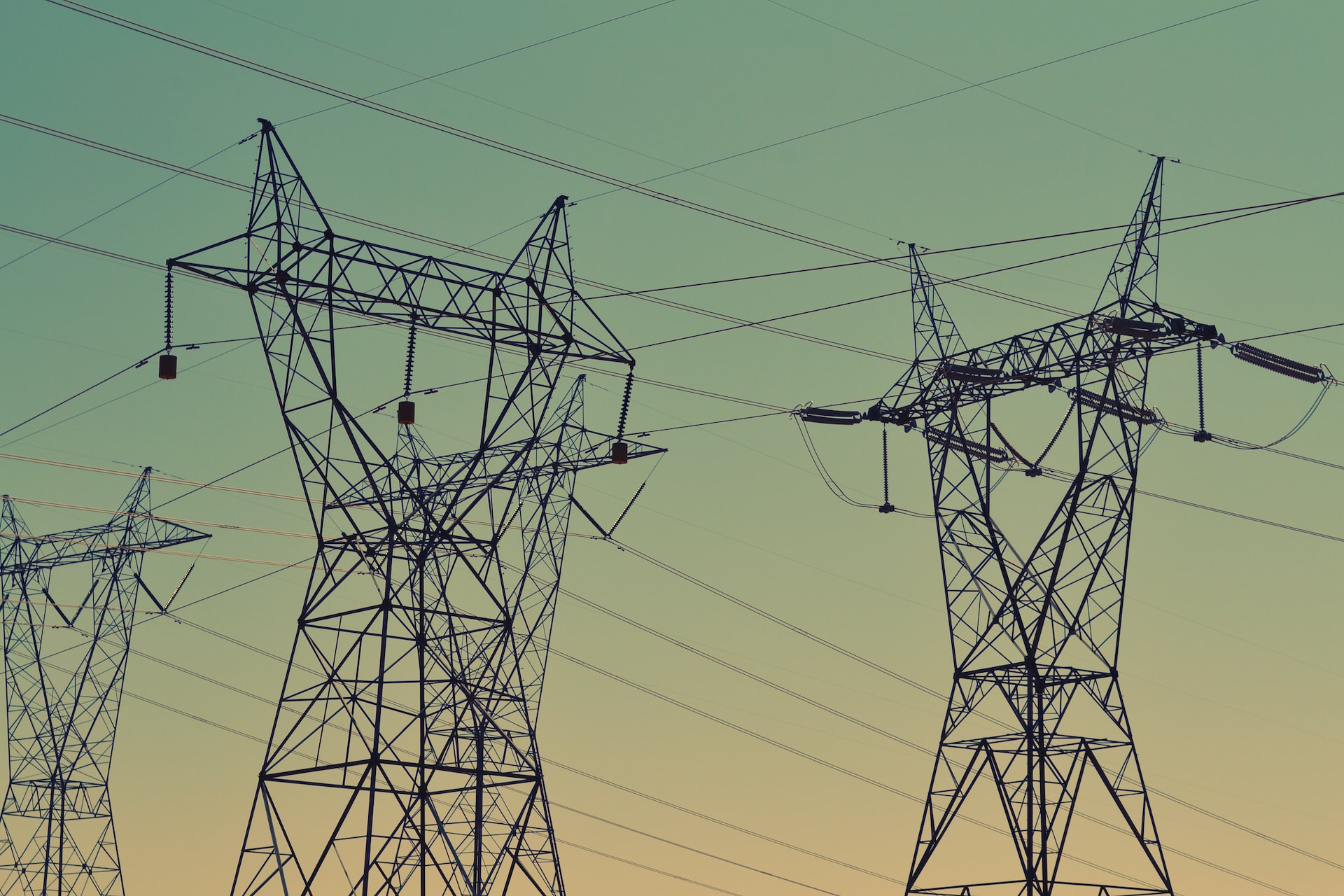Welcome to our blog post, where we dive into the current grid conditions in Texas as of 7/27/2023. You may have heard about the recent power outages that shook the Lone Star State, leaving many residents in the dark – literally and figuratively. In this article, we will explore what exactly grid conditions are, why they can cause power disruptions, who is affected by them, and how you can prepare yourself for such situations. So grab a cup of coffee, and let’s shed some light on this topic together!
What are Grid Conditions?
Grid conditions refer to the state of the electrical power grid, which various factors can influence. Essentially, it refers to the grid’s overall stability and reliability in supplying electricity to consumers.
The main components of a power grid are generators, transmission lines, substations, and distribution networks. These elements work together seamlessly when everything is functioning correctly. However, the grid’s performance can be compromised during certain circumstances or events, such as extreme weather conditions or equipment failures.
Grid conditions can vary depending on numerous factors. For example, grid conditions may become strained during periods of high electricity demand or when there is limited generation capacity available. This strain can increase the risk of blackouts or brownouts if measures aren’t taken to manage the situation effectively.
In Texas specifically, recent severe winter storms caused widespread power outages due to frozen equipment and reduced generation capacity. The resulting grid conditions were extremely challenging as electricity demand exceeded supply capabilities.
It’s important to note that while some areas may experience temporary disruptions in their power supply during these times, others may not be affected at all. Grid conditions impact regions differently based on factors like infrastructure strength and location.
Understanding what grid conditions help us recognize potential risks associated with our energy system and enables us to take necessary precautions when needed
What Caused the Power Outages in Texas?
What caused the power outages in Texas? Well, a perfect storm of events led to this unfortunate situation. First and foremost, extreme winter weather swept across the state, bringing freezing temperatures and heavy snowfall. This resulted in an increased demand for electricity as people cranked up their heaters to stay warm.
However, at the same time, many power plants could not operate at total capacity due to equipment failures or frozen components. This created a significant imbalance between supply and demand on the grid. As a result, rolling blackouts had to be implemented by utility companies to avoid a complete system failure.
Another contributing factor was the reliance on natural gas as a primary energy source in Texas. The frigid temperatures caused numerous wells and pipelines to freeze, leading to reduced natural gas supplies for power generation.
Furthermore, renewable energy sources like wind turbines also experience issues during severe weather conditions. Ice build-up on turbine blades hindered their ability to generate electricity effectively.
These combined factors ultimately overwhelmed the grid’s capacity and resulted in widespread power outages throughout Texas during this challenging period.
Who is Affected by Grid Conditions?
Who is affected by grid conditions? No one is immune when it comes to power outages and disruptions in the electrical grid. Grid conditions can impact individuals, businesses, and entire communities. Whether you live in a bustling city or a rural area, the effects of grid conditions can be far-reaching.
For homeowners, a power outage during grid conditions means being without electricity for an extended period of time. This can be particularly challenging if you rely on electricity to heat or cool your home, cook meals, or even charge your devices. It’s essential to have backup plans, such as alternative heat sources or cooking equipment.
Grid conditions also greatly affect businesses as they rely heavily on uninterrupted power supply to keep their operations running smoothly. A prolonged power outage can result in financial losses due to halted production and disrupted services.
Community infrastructure such as hospitals, schools, and public transportation systems are also vulnerable during grid conditions. Power outages can disrupt essential services leading to potential safety hazards and inconveniences for residents.
In conclusion, grid conditions’ impacts are widespread and affect everyone, from individual households to large-scale businesses and community infrastructure. It’s crucial to be prepared for these situations by having backup plans in place and staying informed about any updates regarding the status of the electrical grid.
How Long do Grid Conditions Last?
Grid conditions can vary in duration depending on the specific circumstances. In some cases, grid conditions may only last for a few hours or a day, while in other instances they can persist for several days or even longer. The length of time that grid conditions last is typically determined by factors such as the severity of the weather event or other disruptions to the power system.
For example, during extreme weather events like hurricanes or winter storms, grid conditions can extend for multiple days as utility companies work to repair damage and restore power to affected areas. Similarly, if there are significant maintenance issues or equipment failures within the power infrastructure, it may take longer to resolve these issues and bring the grid back online.
It’s important to note that during prolonged grid conditions, it may be necessary for individuals and communities to make alternative arrangements for their energy needs. This could involve using backup generators, seeking shelter with access to electricity at designated locations like community centers or hotels, or taking steps to conserve energy usage until regular service is restored.
The duration of grid conditions will depend on various factors specific to each situation. However, being prepared with alternative plans and staying informed about updates from local authorities and utility providers can help navigate these challenging times.
Are there any Dangers Associated with Grid Conditions?
Grid conditions, particularly during high energy demand or extreme weather events, can pose certain risks and hazards. One of the main concerns is power outages, which can leave individuals and communities without electricity for extended periods. This can disrupt daily routines, impact essential services like healthcare facilities and emergency response systems, and potentially compromise the safety and well-being of vulnerable populations.
Additionally, when power grids become overloaded or experience equipment failures due to high demand or severe weather conditions such as storms or heat waves, there is a risk of electrical fires. Overheated transformers or faulty wiring can lead to sparks and flames that may spread rapidly unless promptly addressed.
Furthermore, prolonged grid conditions can strain backup power systems such as generators. If these systems are adequately maintained and have sufficient fuel supply, they may succeed when needed most during an outage.
Another potential danger is the impact on critical infrastructure like water treatment plants. Access to clean drinking water could be compromised without electricity to power pumps and maintain filtration processes.
It’s important to note that extreme hot or cold temperatures during grid conditions can also pose health risks for individuals who rely on powered medical devices for life support or temperature regulation.
To mitigate these dangers associated with grid conditions, it’s advisable to have an emergency preparedness plan in place. This includes having alternative sources of power like generators if feasible, stocking up on essential supplies, including food and water supplies that don’t require refrigeration or heating/cooking appliances during an outage,
Stay tuned for more information about preparing for grid conditions in our next blog post!
How can you Prepare for Grid Conditions?
How can you prepare for grid conditions? It’s important to be proactive and ensure safety and comfort during power outages. Here are some tips to help you get prepared:
1. Create an emergency kit: Put together a kit that includes essentials such as flashlights, batteries, non-perishable food, water, and a first aid kit. Make sure it’s easily accessible in case of an outage.
2. Have alternative heating/cooling options: Extreme temperatures can make living without electricity uncomfortable, depending on the season. Consider getting backup heating methods like propane heaters or portable fans for cooling.
3. Invest in a generator: A generator can provide temporary power during outages. You can choose one that suits your needs and have it professionally installed to avoid any safety hazards.
4. Stay updated with weather forecasts: Keep an eye on weather reports so you can anticipate potential grid conditions ahead of time and plan accordingly.
5. Maintain communication devices: Ensure you have fully charged cell phones or battery-powered radios for staying connected during emergencies.
6. Preventative maintenance: Please look at your electrical system and address any issues immediately to avoid problems during grid conditions.
By taking these precautionary measures, you’ll be better equipped to handle unexpected power outages caused by grid conditions in Texas.”
What should you do if you Experience a Power Outage During Grid Conditions?
Power outages can occur during grid conditions, leaving many people without electricity. If you are in this situation, please know what steps to take to ensure your safety and minimize inconvenience.
Please keep calm and check if the outage affects your entire neighborhood or home. This information will help determine the scale of the issue and whether you need to contact your energy provider.
Next, gather essential supplies such as flashlights, batteries, and non-perishable food items. It’s also wise to keep a stock of bottled water for drinking and hygiene purposes.
If the outage persists for an extended period or poses a threat to your well-being, consider finding alternative shelter with friends or family who have power. Also, I’d like you to stay informed by listening to battery-powered radios or using mobile devices sparingly while conserving your battery life.
Avoid opening refrigerators or freezers unnecessarily so that perishable food lasts longer. If possible, use coolers with ice packs for temporary storage of perishables.
Just to remind you, grid conditions are temporary situations caused by various factors beyond our control. By staying prepared and following these guidelines during a power outage, you can navigate through the challenges more effectively until normalcy is restored
Conclusion on Grid Conditions
Grid conditions can significantly impact the availability and reliability of electricity in Texas. As we’ve discussed, these conditions occur when there is high demand for electricity and limited supply. The recent power outages in Texas were a result of extreme weather events combined with an overloaded grid.
Grid conditions affect everyone who relies on electricity, from homes to businesses and essential services. It’s important to be prepared for potential power outages during these times by having emergency supplies and backup plans in place.
While there are dangers associated with grid conditions, such as the risk of freezing temperatures without heating or disruptions to critical medical equipment, taking proactive measures can help mitigate these risks. Stay informed about weather forecasts and any warnings issued by local authorities.
If you experience a power outage during grid conditions, staying safe and seeking shelter is crucial. Report the outage to your utility provider so they can work towards restoring power as quickly as possible. Use alternative sources of heat cautiously and avoid using generators indoors due to carbon monoxide poisoning risks.
Remember that grid conditions are temporary situations that will eventually be resolved once supply catches up with demand. In the meantime, being prepared and staying informed will help you through any challenges until normal operations are restored.
Stay vigilant, and take care of yourself and your loved ones, especially during extreme weather events when grid conditions may pose additional challenges. By working together as a community, we can overcome these obstacles more effectively while ensuring our safety and well-being during trying times like this.
So remember – stay informed, be prepared, and keep safe!




